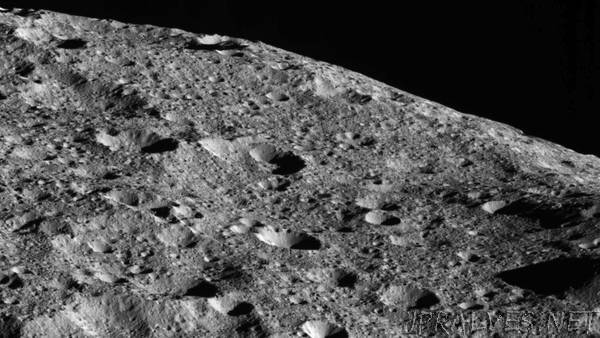
“NASA’s Dawn spacecraft is maneuvering to its lowest-ever orbit for a close-up examination of the inner solar system’s only dwarf planet.
In early June, Dawn will reach its new, final orbit above Ceres. Soon after, it will begin collecting images and other science data from an unprecedented vantage point. This orbit will be less than 30 miles (50 kilometers) above the surface of Ceres — 10 times closer than the spacecraft has ever been.
Dawn will collect gamma ray and neutron spectra, which help scientists understand variations in the chemical makeup of Ceres’ uppermost layer. That very low orbit also will garner some of Dawn’s closest images yet.
The transfer from Dawn’s previous orbit to its final one is not as simple as making a lane change. Dawn’s operations team worked for months to plot the course for this second extended mission of the veteran spacecraft, which is propelled by an ion engine. Engineers mapped out more than 45,000 possible trajectories before devising a plan that will allow the best science observations.
Dawn was launched in 2007 and has been exploring the two largest bodies in the main asteroid belt, Vesta and Ceres, to uncover new insights into our solar system. It entered Ceres’ orbit in March 2015.
“The team is eagerly awaiting the detailed composition and high-resolution imaging from the new, up-close examination,” said Dawn’s Principal Investigator Carol Raymond of NASA’s Jet Propulsion Laboratory, Pasadena, California. “These new high-resolution data allow us to test theories formulated from the previous data sets and discover new features of this fascinating dwarf planet.”“
